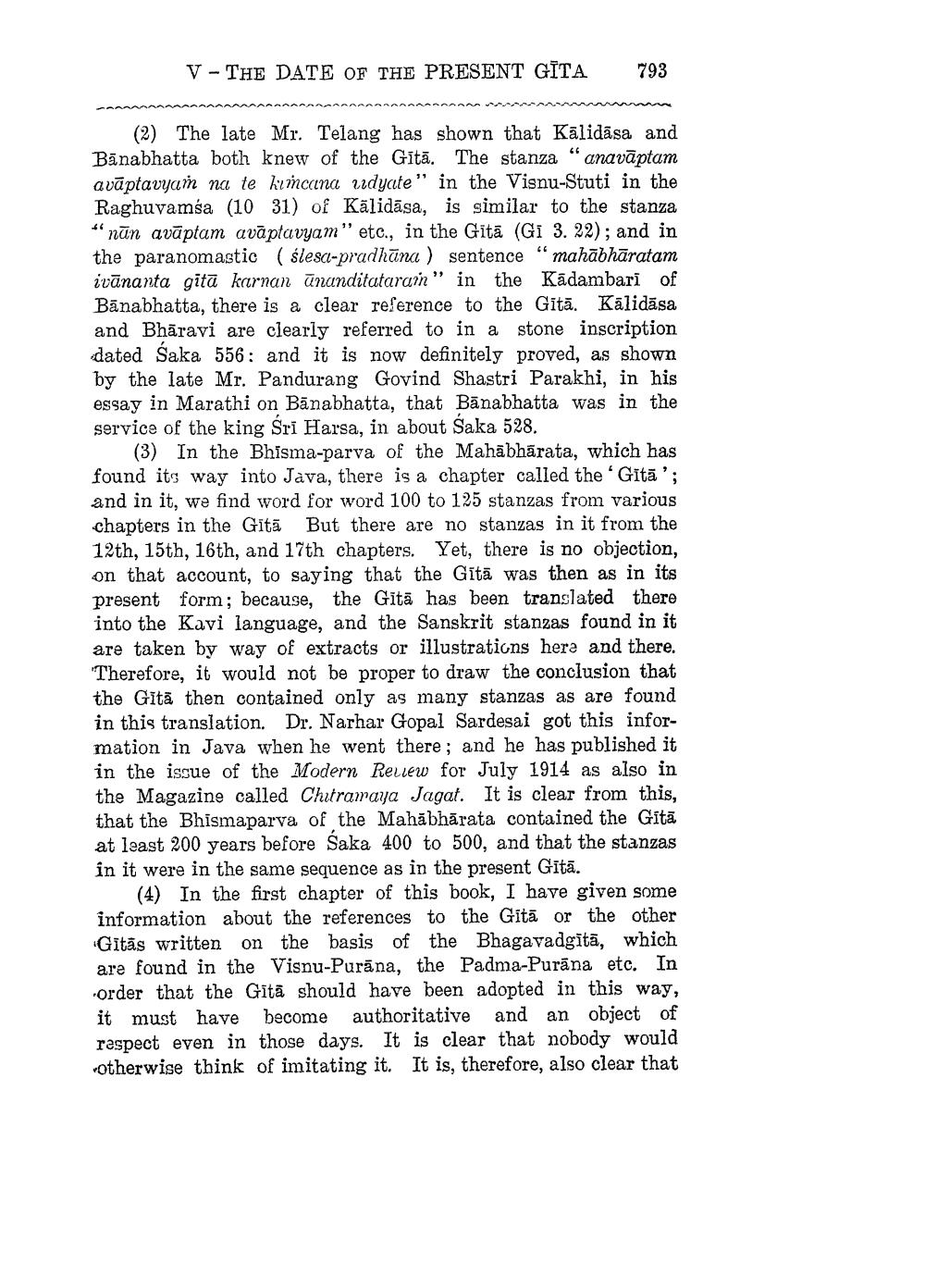________________
V THE DATE OF THE PRESENT GITA 793
-
(2) The late Mr. Telang has shown that Kalidasa and Binabhatta both knew of the Gita. The stanza "anavāptam Gītā. avaplavyam na te kamcana sadyate" in the Visnu-Stuti in the Raghuvamsa (10 31) of Kalidasa, is similar to the stanza "nun avaplam avaplavyam" etc., in the Gita (GI 3. 22); and in the paranomastic (ślesa-pradhana) sentence "mahabharatam ivananta gita karnan unanditatarain" in the Kadambari of Banabhatta, there is a clear reference to the Gita. Kalidasa and Bharavi are clearly referred to in a stone inscription dated Saka 556: and it is now definitely proved, as shown by the late Mr. Pandurang Govind Shastri Parakhi, in his essay in Marathi on Bänabhatta, that Bänabhatta was in the service of the king Sri Harsa, in about Saka 528.
(3) In the Bhisma-parva of the Mahabharata, which has found its way into Java, there is a chapter called the 'Gitä'; and in it, we find word for word 100 to 125 stanzas from various chapters in the Gita But there are no stanzas in it from the 12th, 15th, 16th, and 17th chapters. Yet, there is no objection, on that account, to saying that the Gits was then as in its present form; because, the Git has been translated there into the Kavi language, and the Sanskrit stanzas found in it are taken by way of extracts or illustrations here and there. Therefore, it would not be proper to draw the conclusion that the Gita then contained only as many stanzas as are found in this translation. Dr. Narhar Gopal Sardesai got this infor mation in Java when he went there; and he has published it in the issue of the Modern Review for July 1914 as also in the Magazine called Chitramaya Jagat. It is clear from this, that the Bhismaparva of the Mahabharata contained the Gita at least 200 years before Saka 400 to 500, and that the stanzas în it were in the same sequence as in the present Gitā.
(4) In the first chapter of this book, I have given some information about the references to the Gits or the other Gitas written on the basis of the Bhagavadgītā, which are found in the Visnu-Purana, the Padma-Purana etc. In -order that the Gita should have been adopted in this way, it must have have become authoritative and an object of raspect even in those days. It is clear that nobody would otherwise think of imitating it. It is, therefore, also clear that




